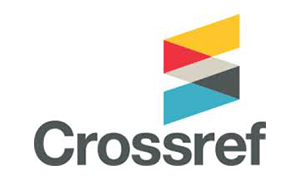Genotype x Environment interaction for yield and yield components in sesame (Sesamum indicum L.)
Keywords:
Sesame, GxE interaction, seed yield per plant, capsules per plant
Abstract
A total of 50 hybrids developed by crossing five lines with ten testers were evaluated along with 15 parents and two checks at three different locations in south Gujarat for the assessment of stability in seed yield per plant and yield contributing traits. Three crosses viz.,G.Til-3 x AKT-101, Patan-64 x JLS-110-12 and G.Til-1 x JLT-7 along with five parents and one check G.Til-4 exhibited higher mean seed yield, unit regression (bi) and least deviation from regression (S2di) and therefore they were classified as stable with average response to environments. Five crosses expressed specific adaptability for favorable environments, while the hybrid G.Til-3 x JLS-110-12 showed specific adaptability to poor environments for seed yield per plant. The stable crosses maintained their yield advantage across environments by maintaining stable performance with respect to two or more important yield components.
Published
31-03-2015
How to Cite
G.B.Chaudhari, M.R.Naik, S.A.Anarase and Y.G.Ban
Genotype x Environment interaction for yield and yield components in sesame Sesamum indicum L.. 2015. Electronic Journal of Plant Breeding, 6 1, 111-117. Retrieved from https://ejplantbreeding.org/index.php/EJPB/article/view/634
Issue
Section
Research Article
It is certified that:
- The corresponding author is fully responsible for any disputes arising due to the publication of his/her manuscript.
- The article has been seen by all the authors who are satisfied with its form and content.
- The sequence of names of authors in the by-line is as per their relative contribution to this experiment, giving due credit to all scientists who made notable contribution to it.
- All the authors fully understand that inclusion of any other co-authors or exclusion of any co-authors is not possible once the article has been submitted to the journal.
- The corresponding author takes full responsibility for this article.
- The address of the organization where the research was conducted is given.
- The article is exclusive for this journal, and the results reported here have not been sent (and will not be sent during its consideration by this journal) for publication in any other journal.
- Authors agree to abide by the objective comments of referees and do agree to modify the article into a short note as per the recommendation, for publication in the Electronic Journal of Plant Breeding.
- If published in Electronic Journal of Plant Breeding, the copyright of this article would vest with the Indian Society of Plant Breeders, who will have the right to enter into any agreement with any organization in India or abroad engaged in reprography, photocopying, storage and dissemination of information contained in it, and neither we nor our legal heirs will have any claims on royalty.


